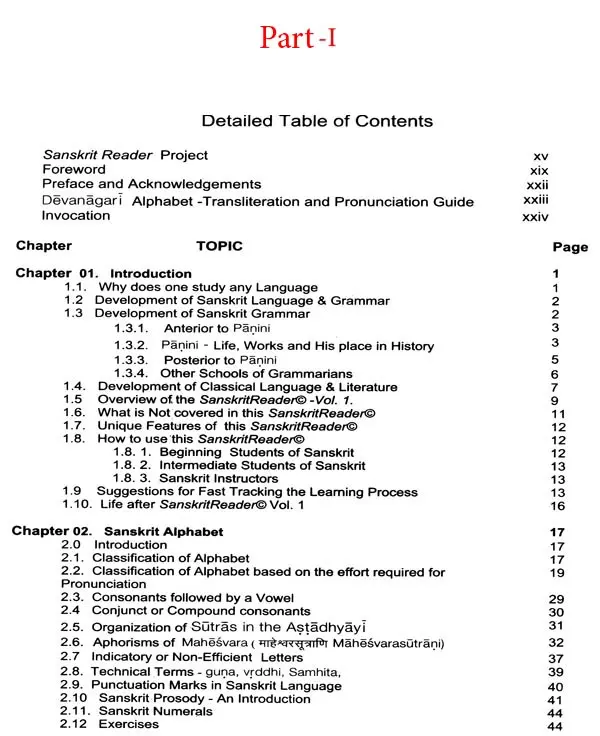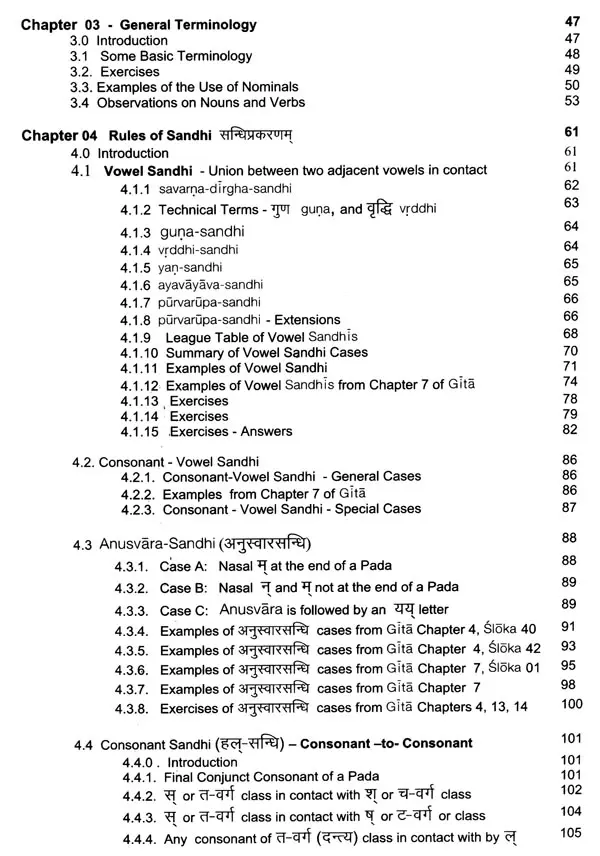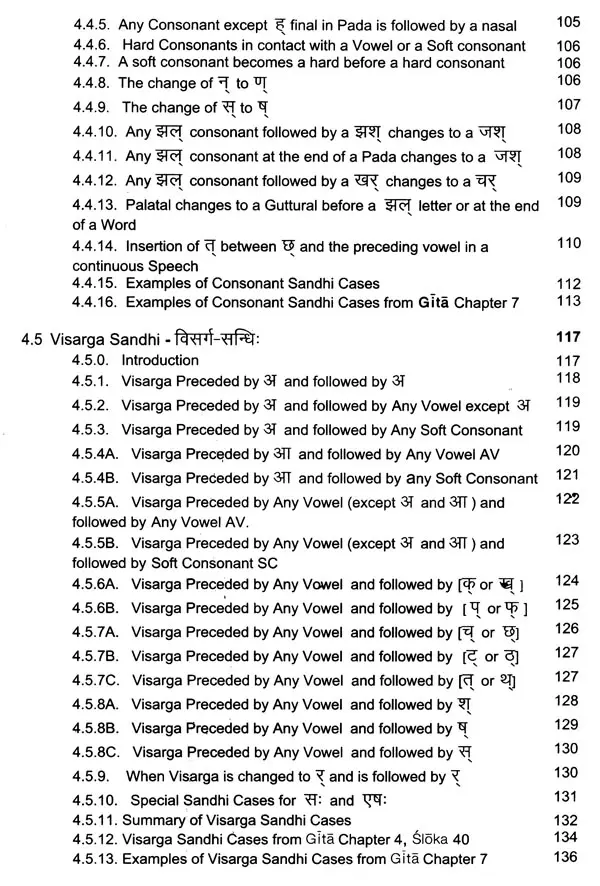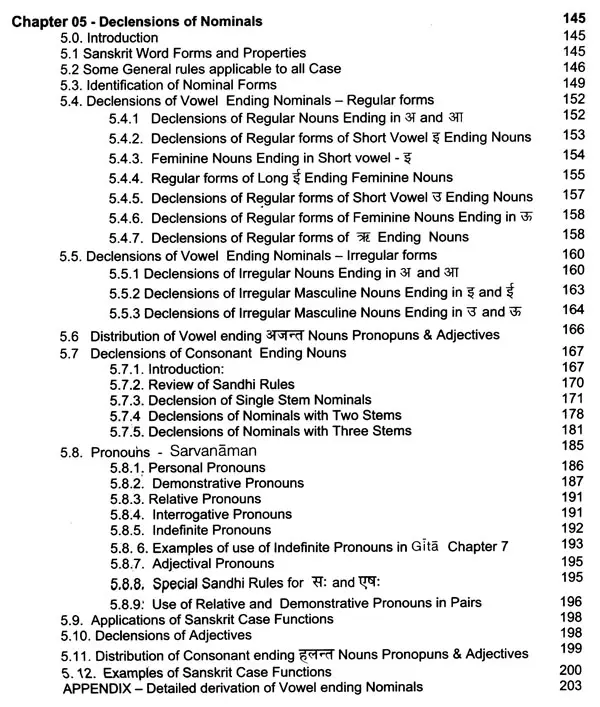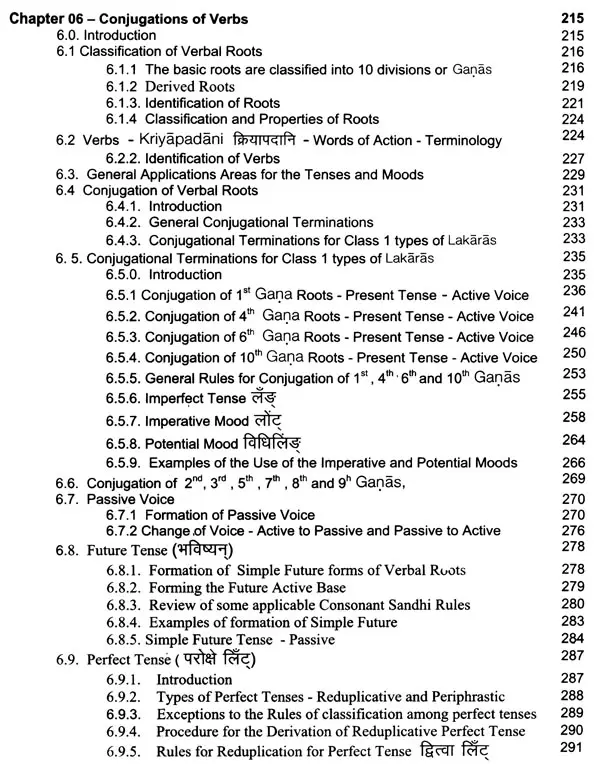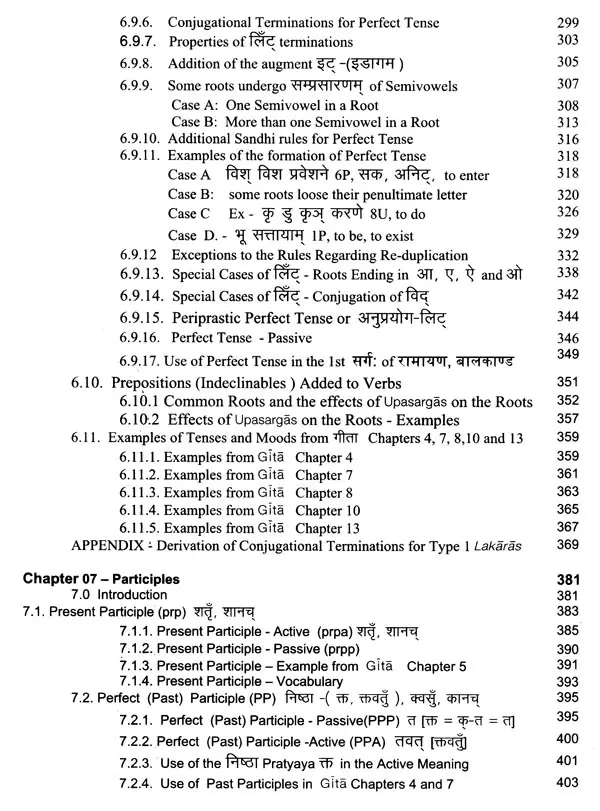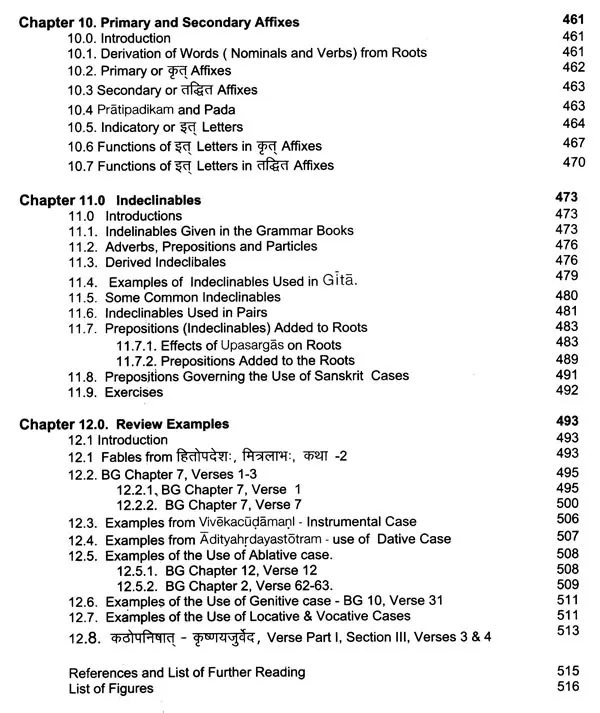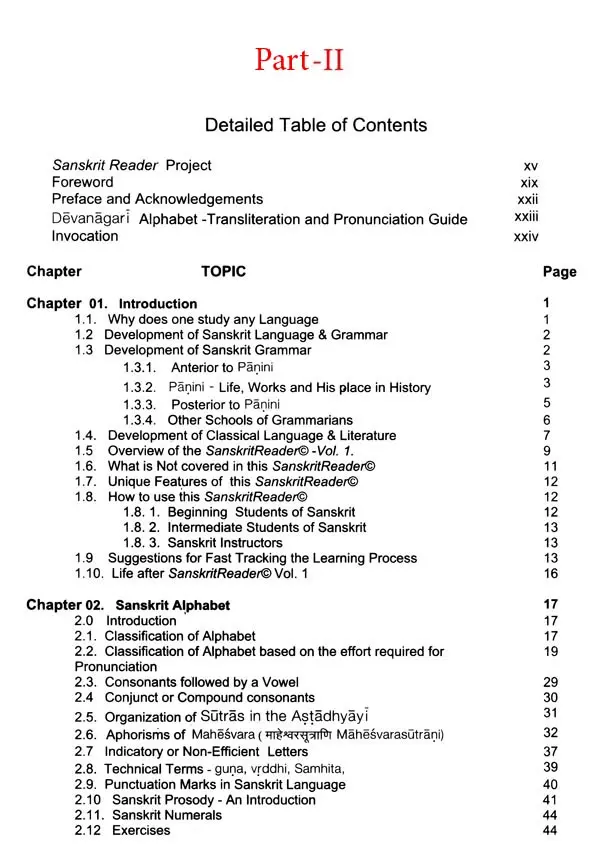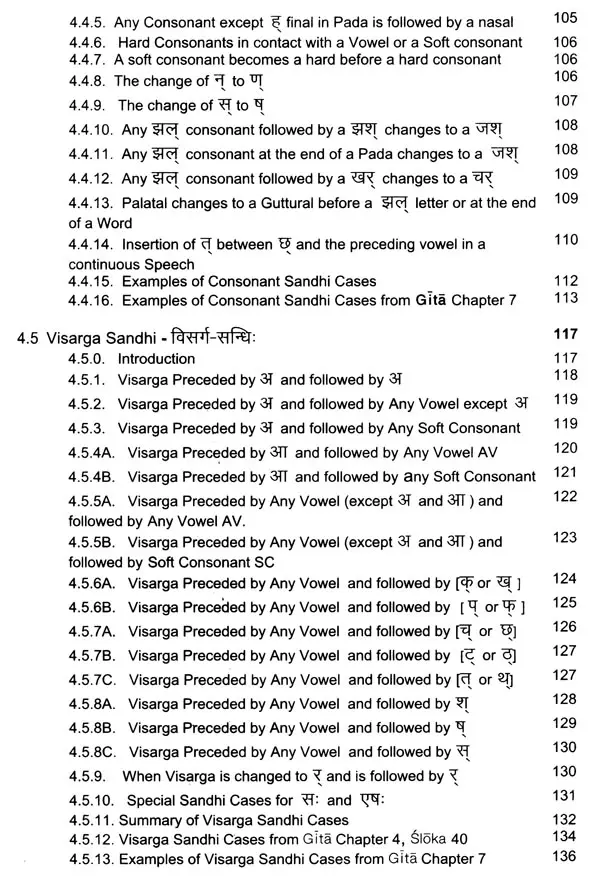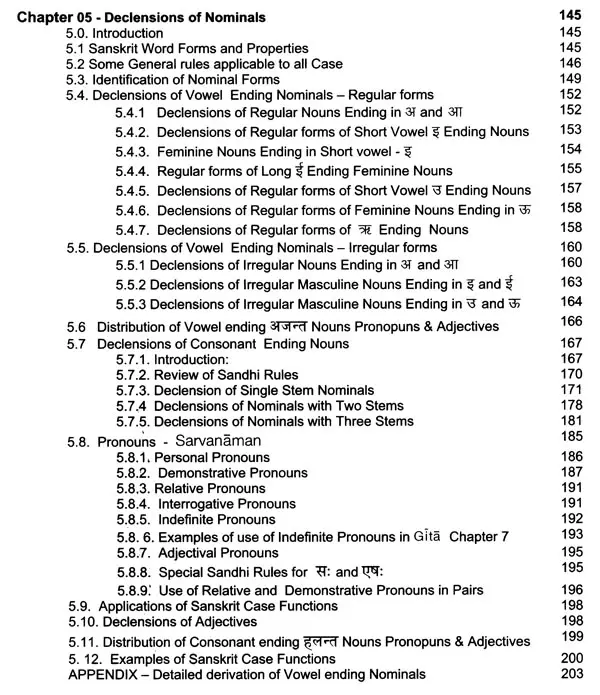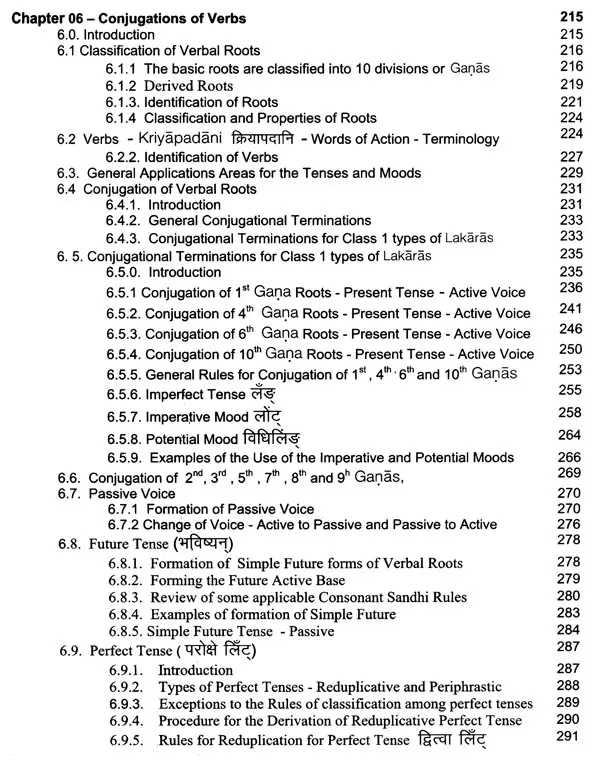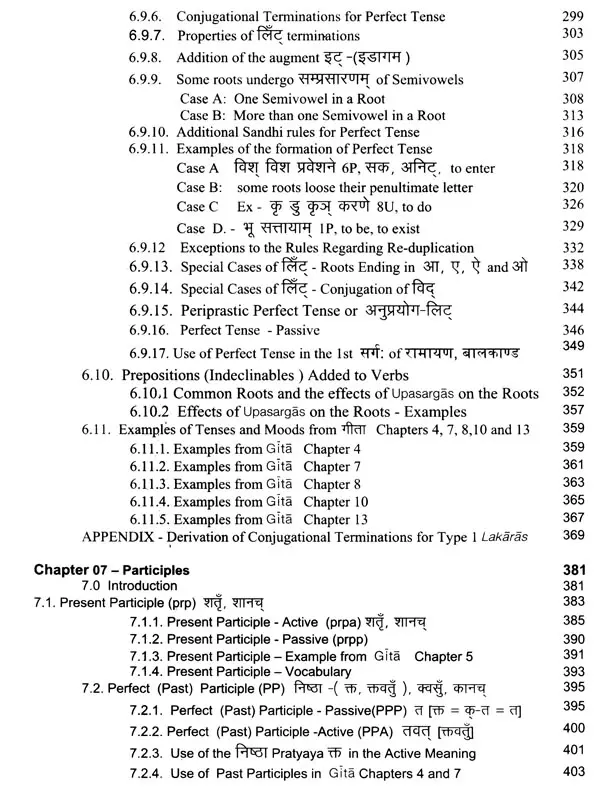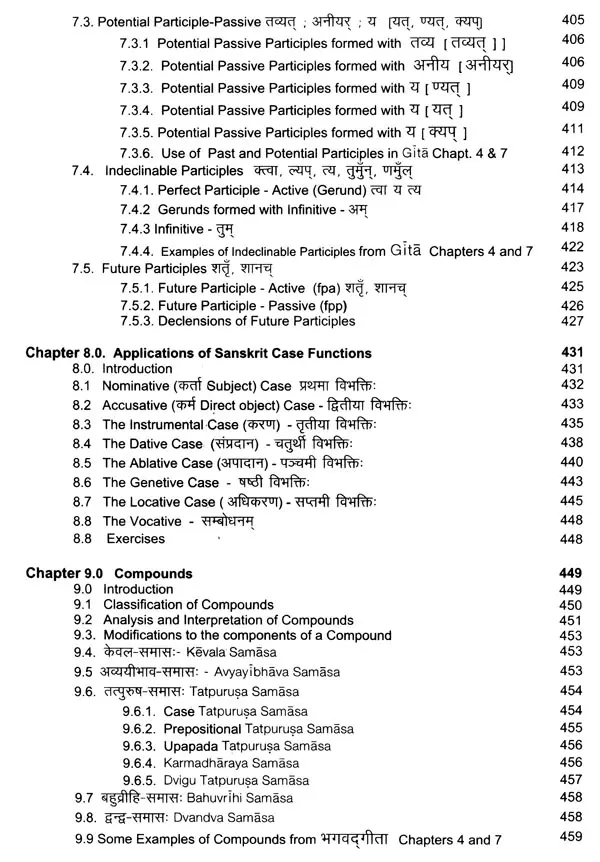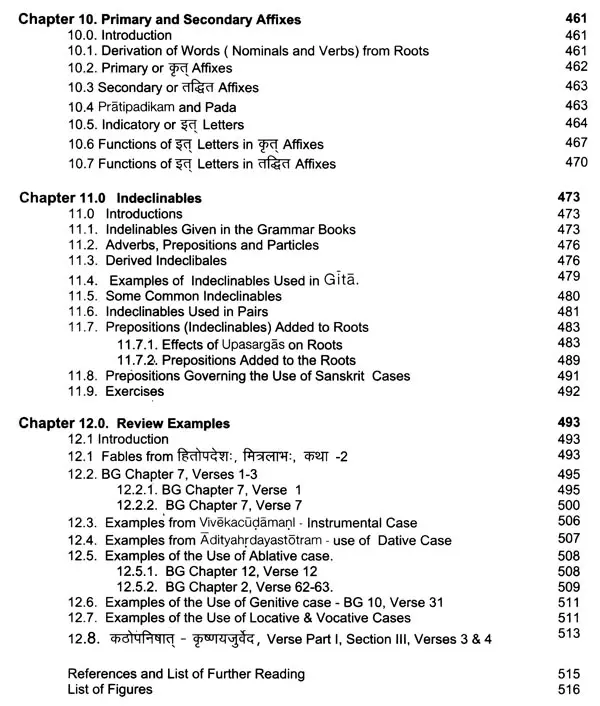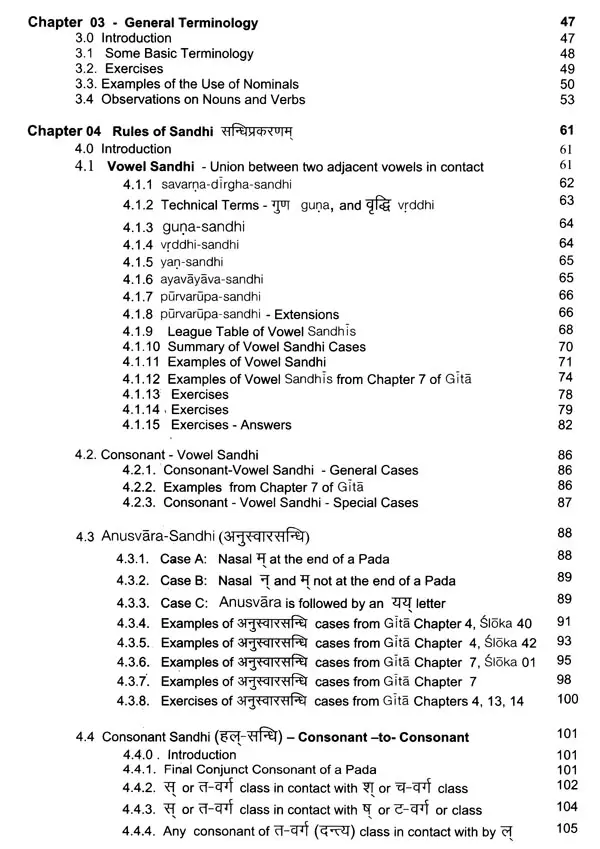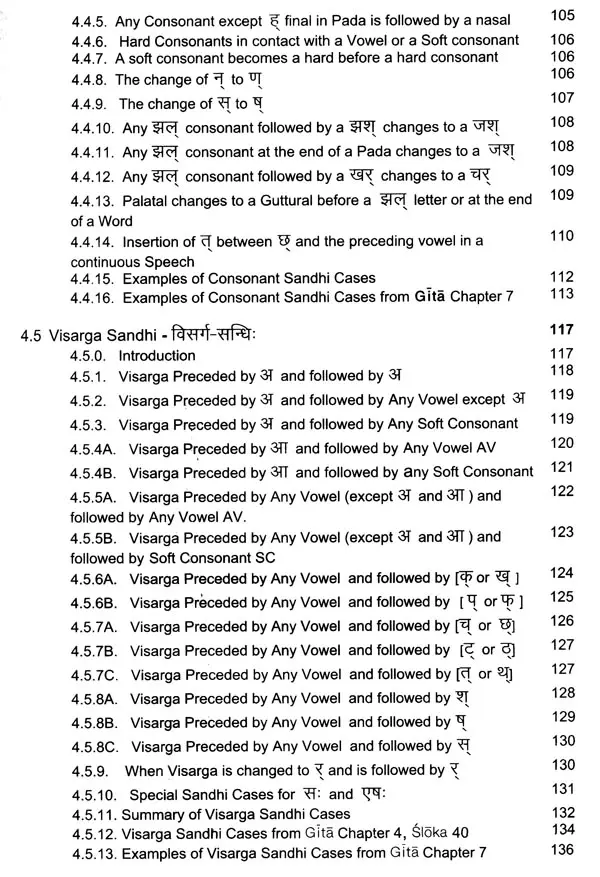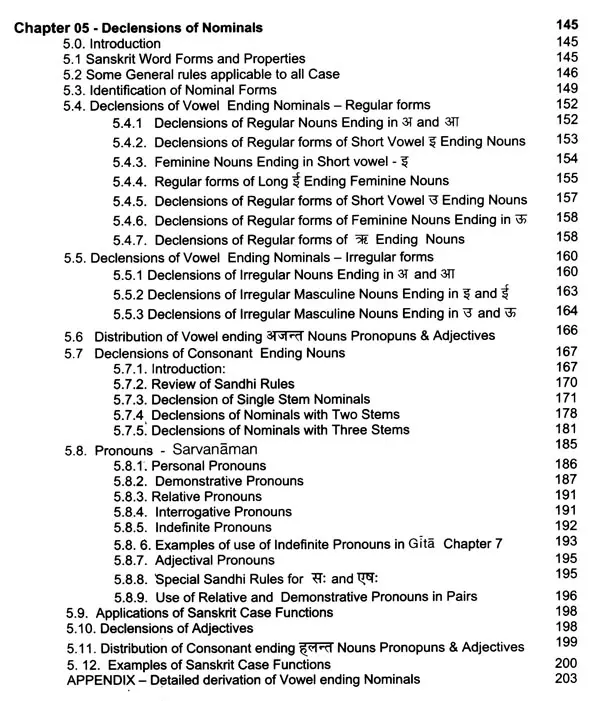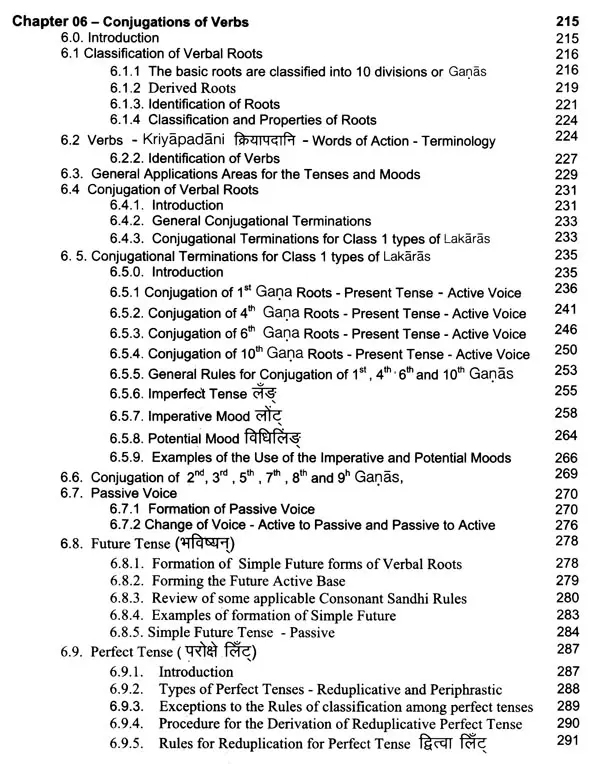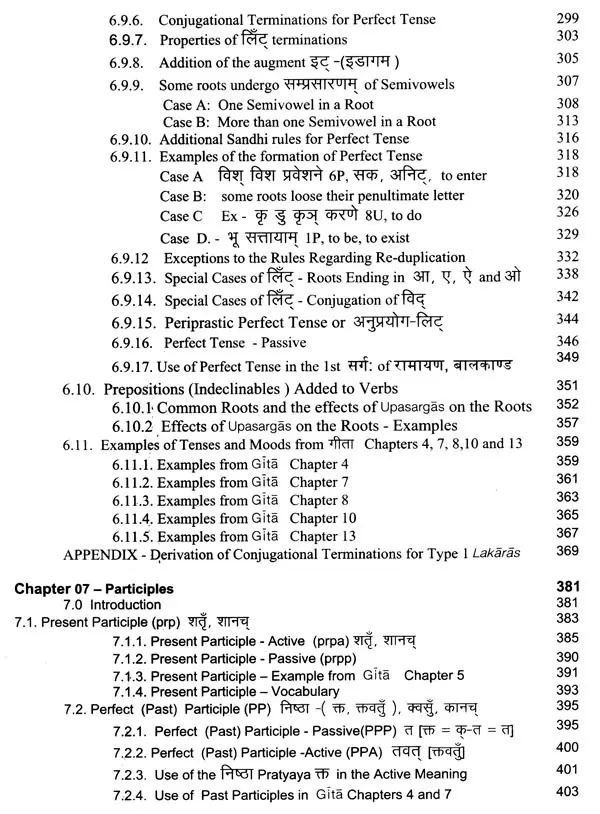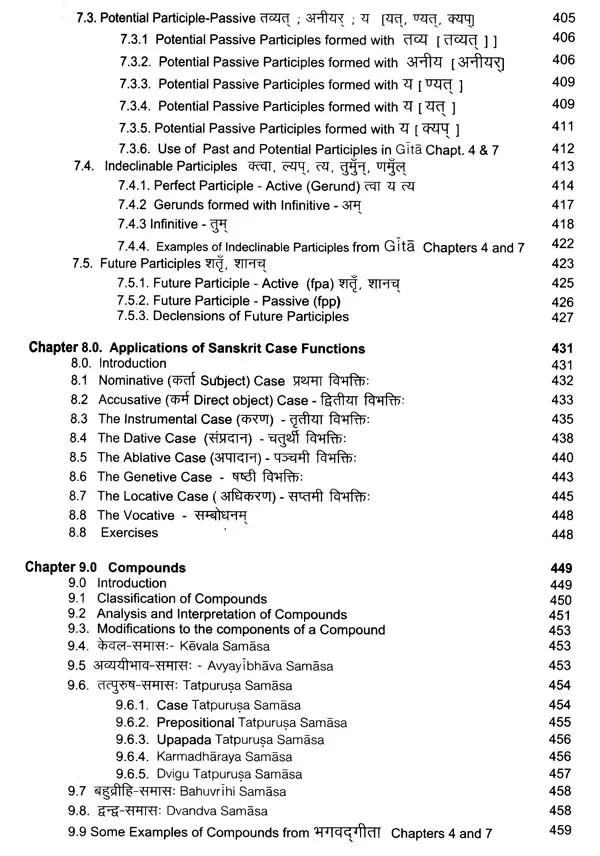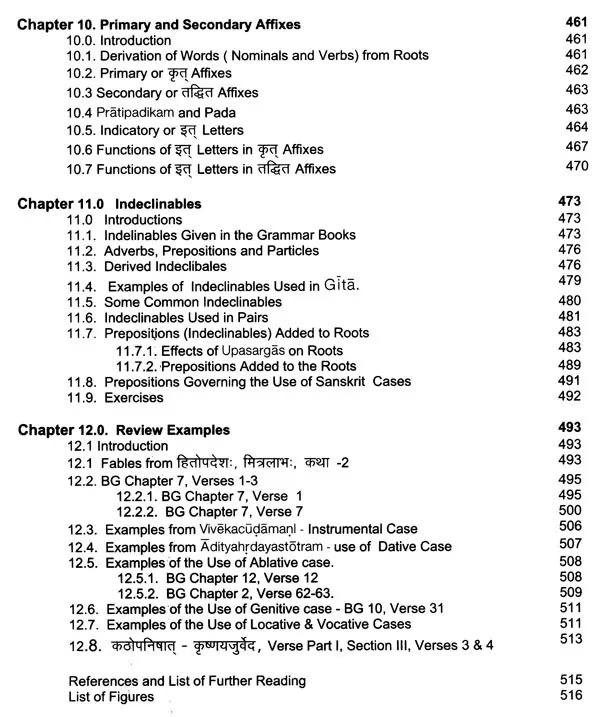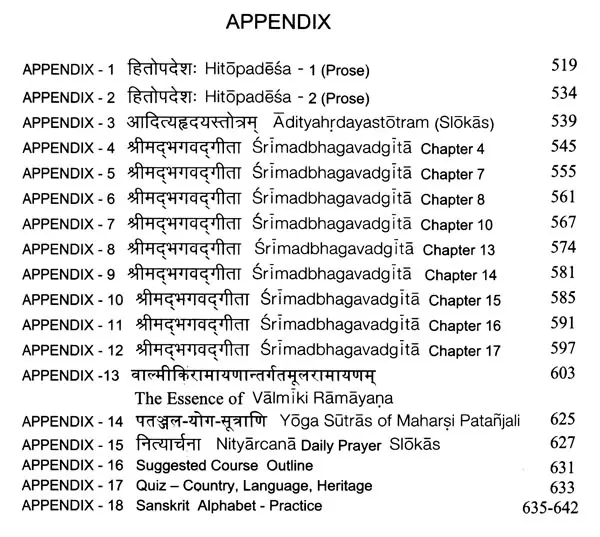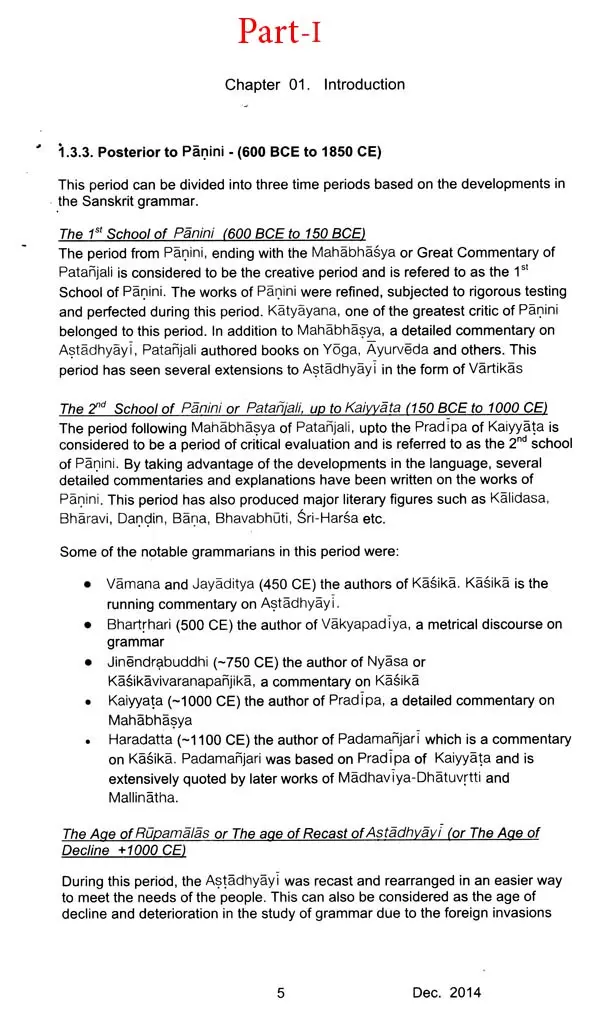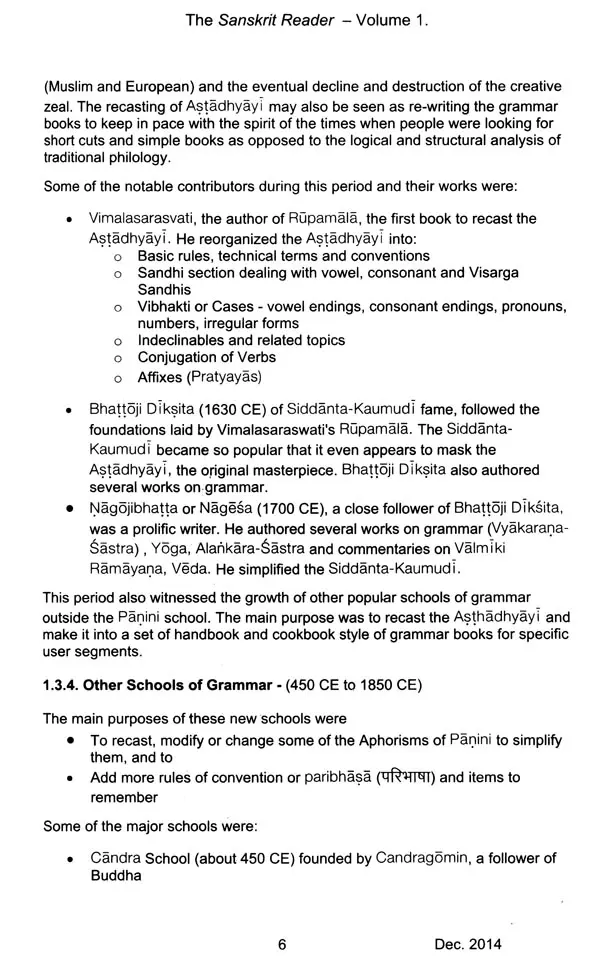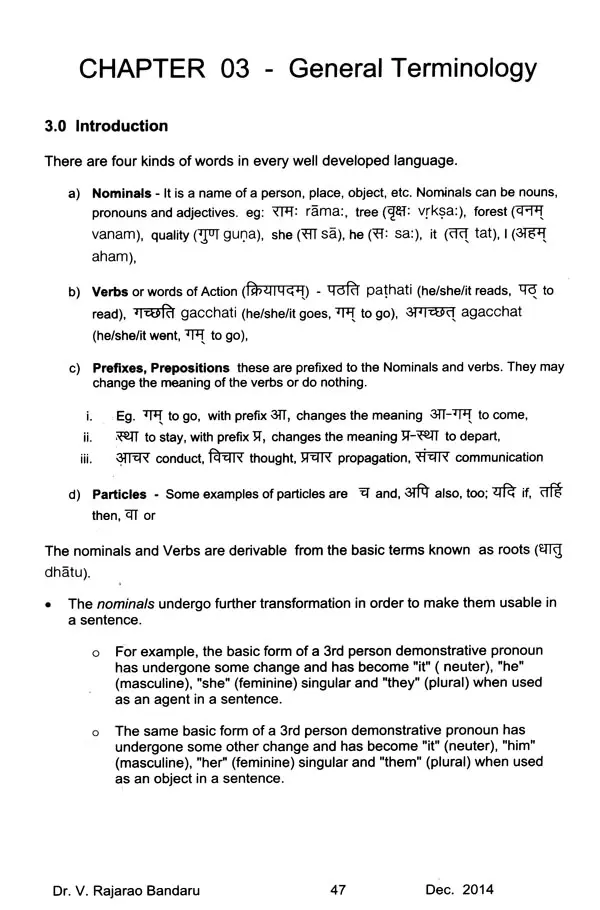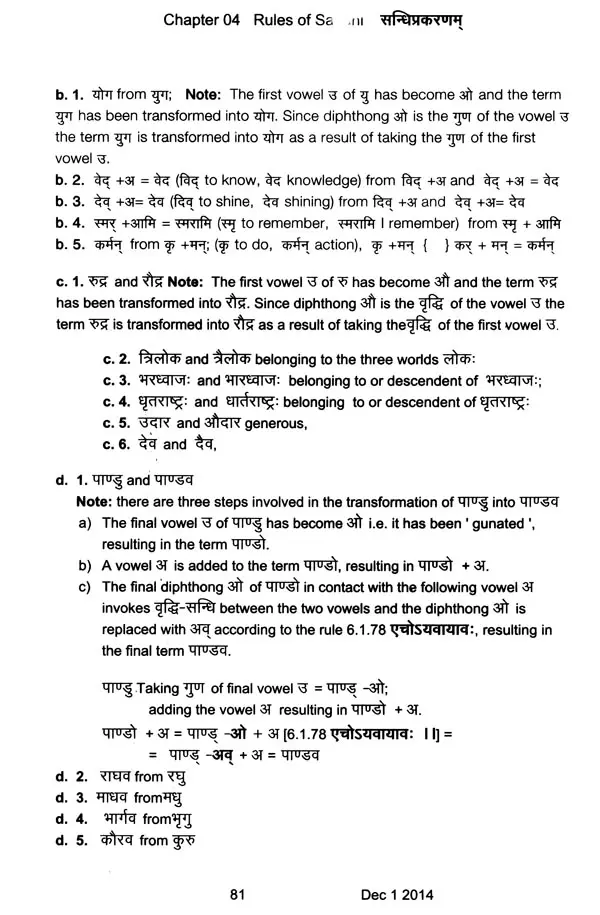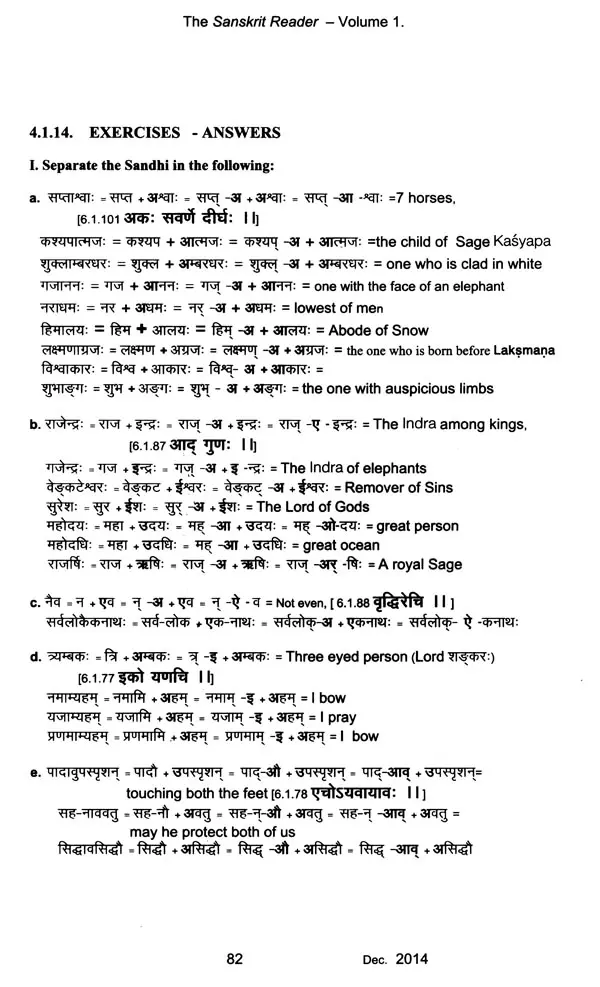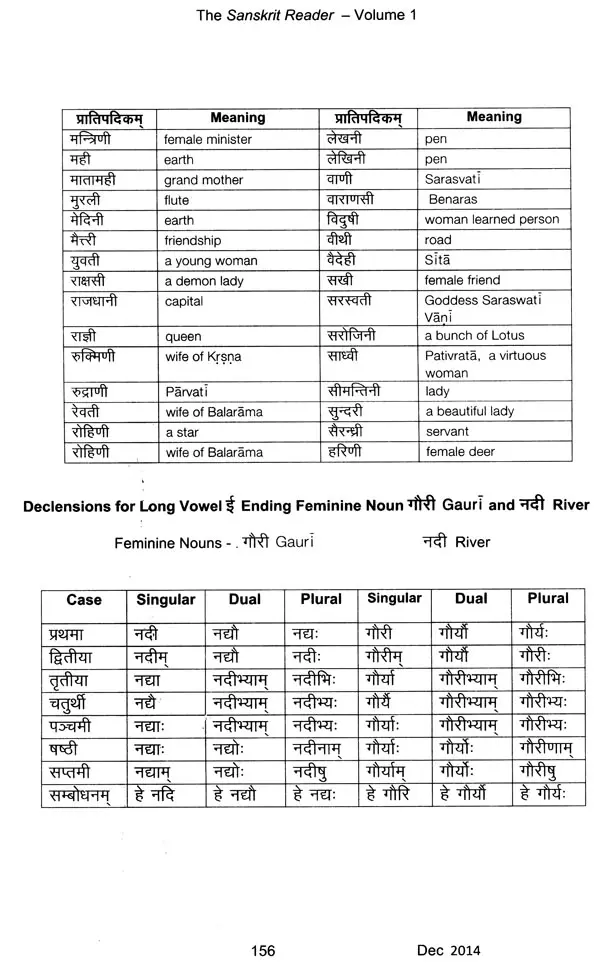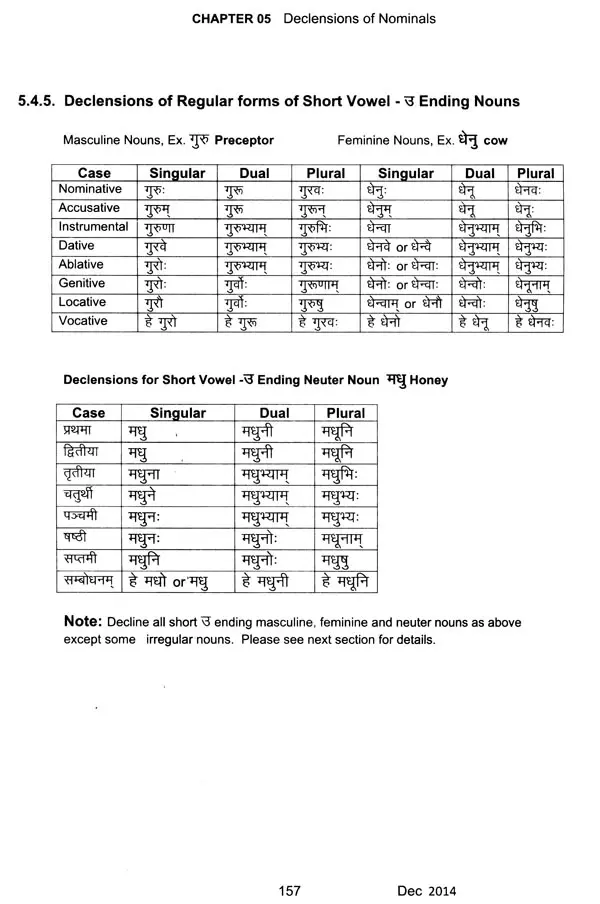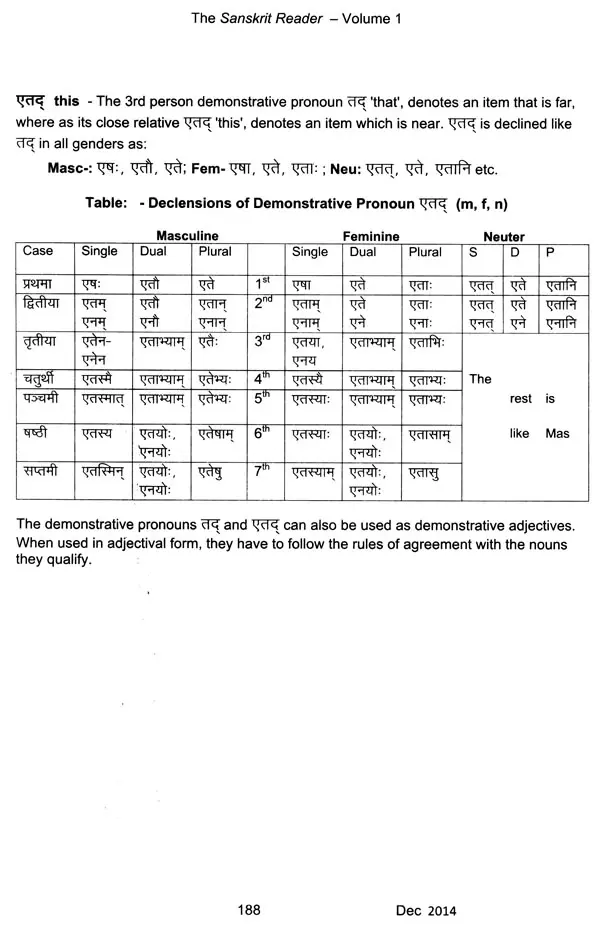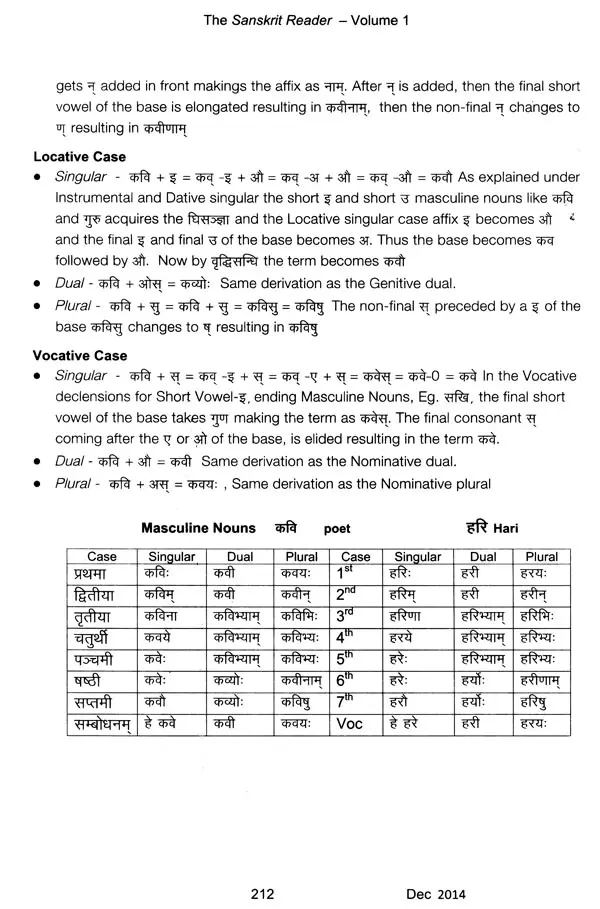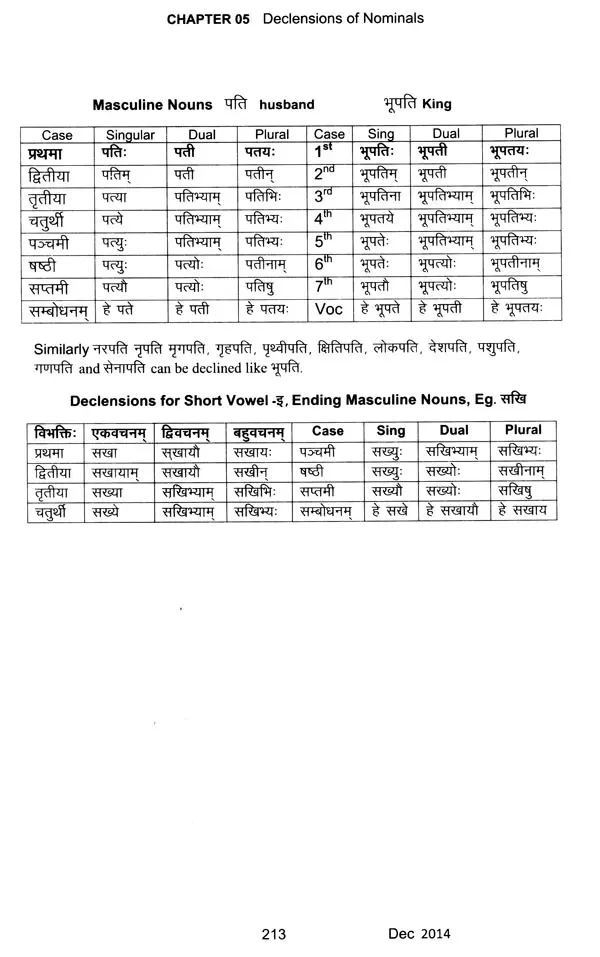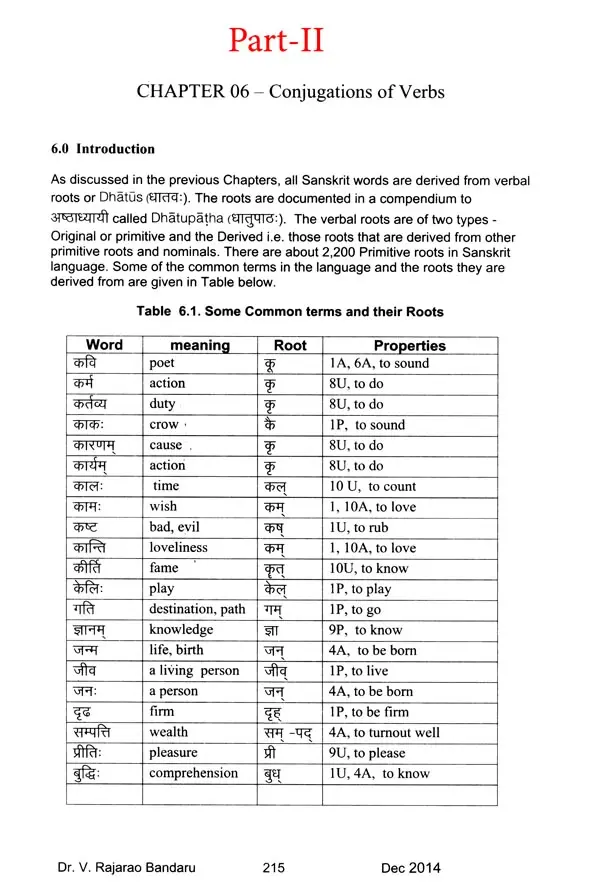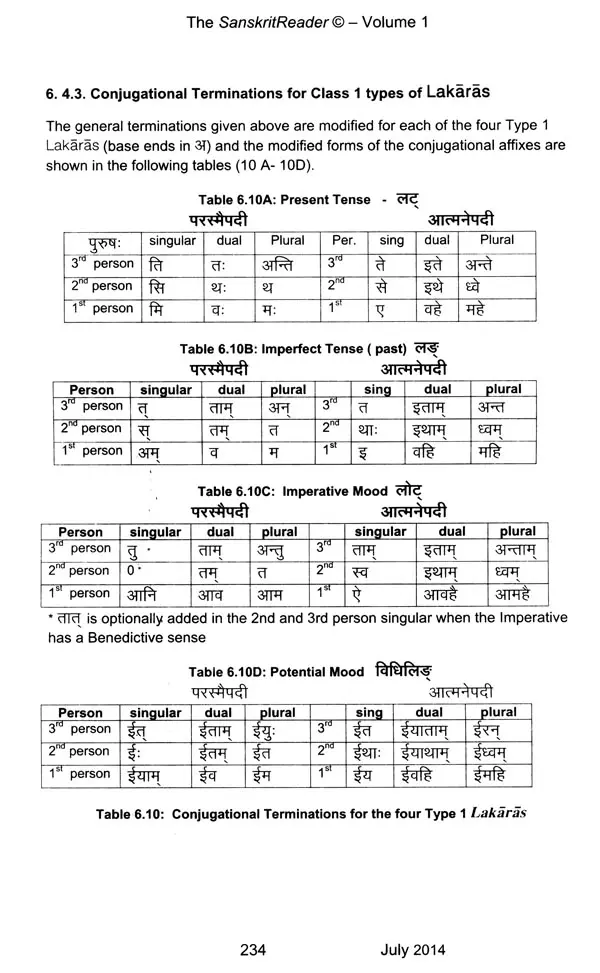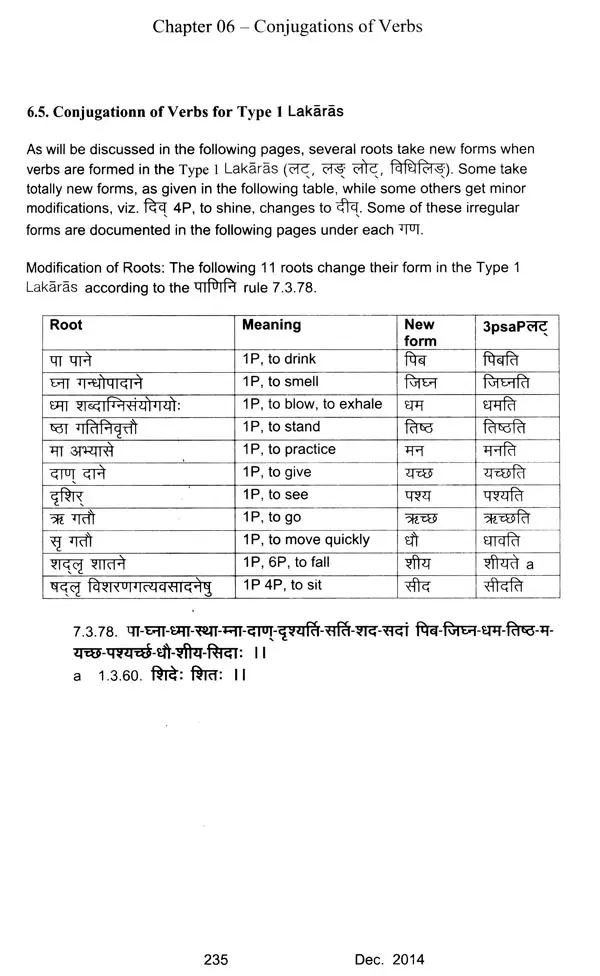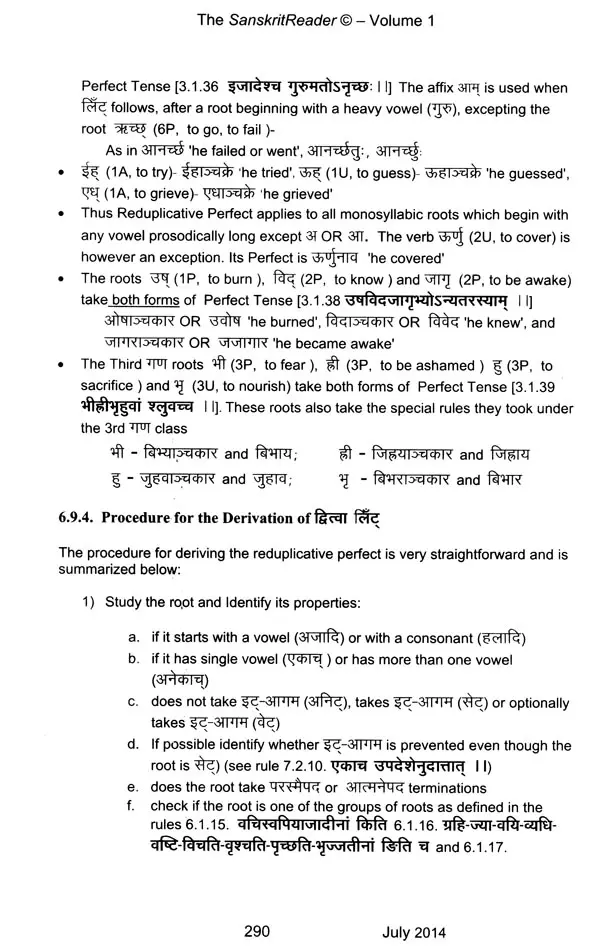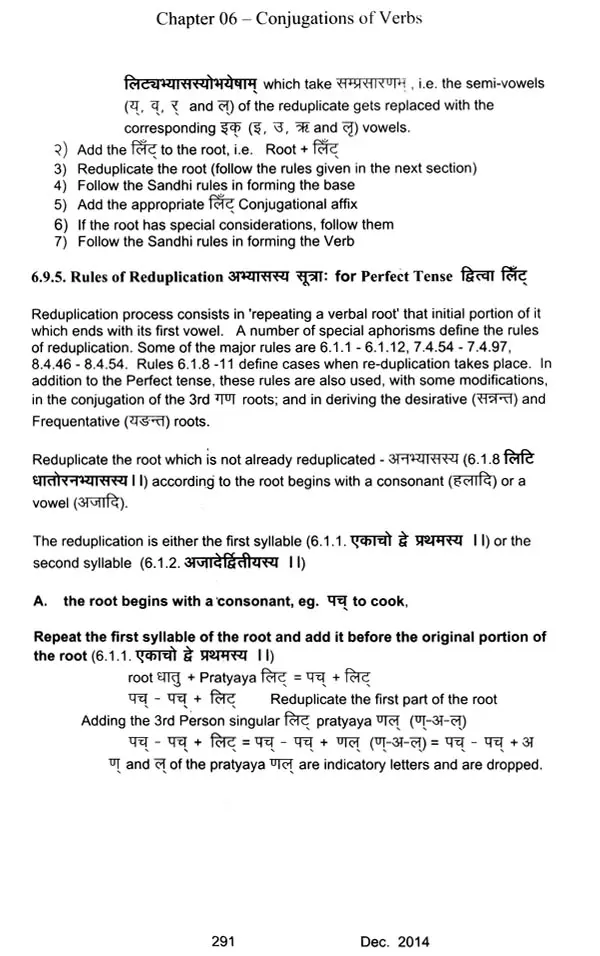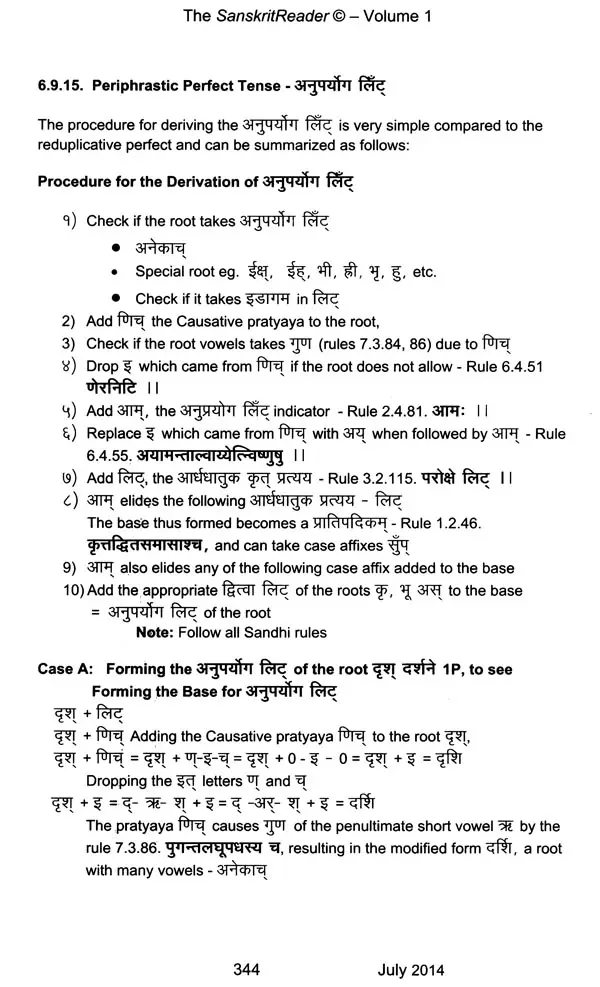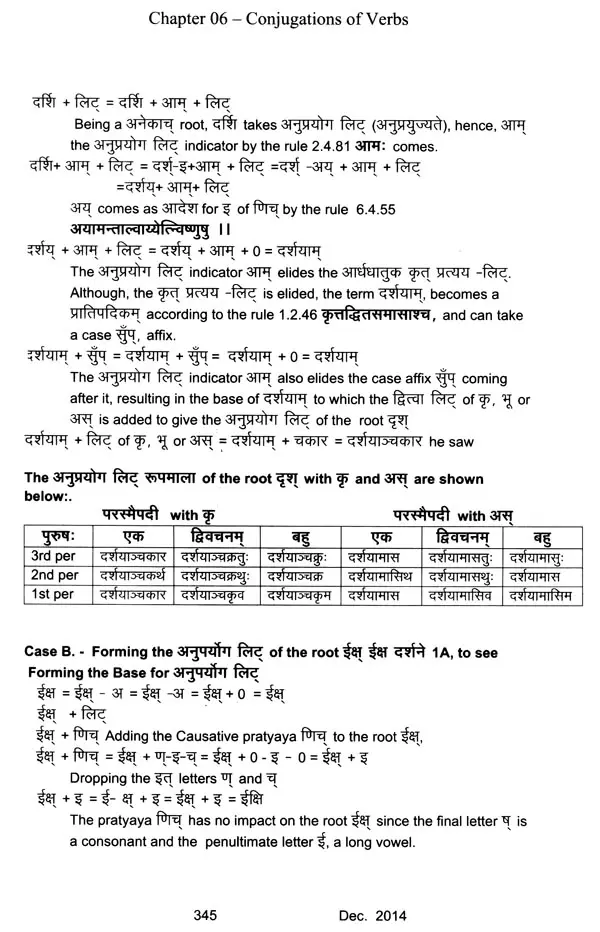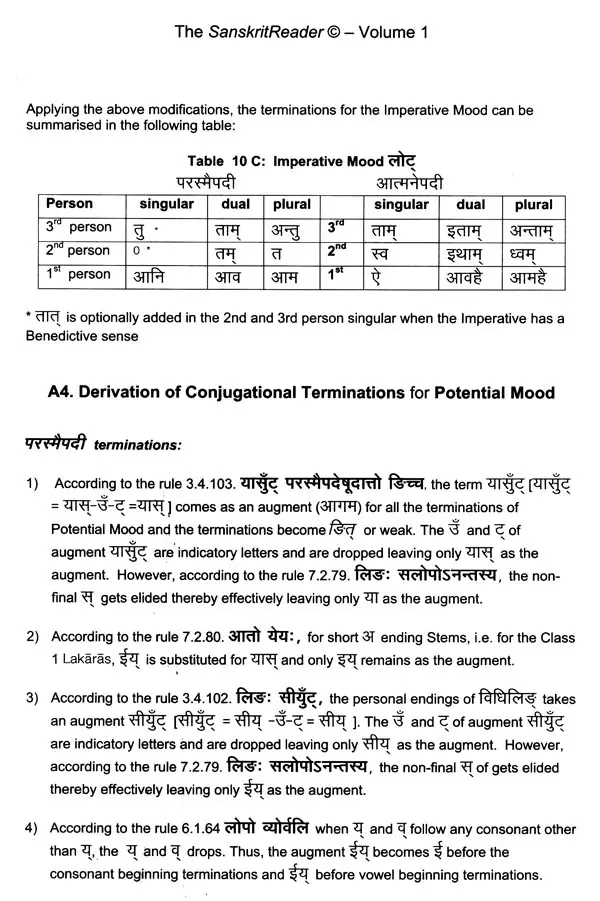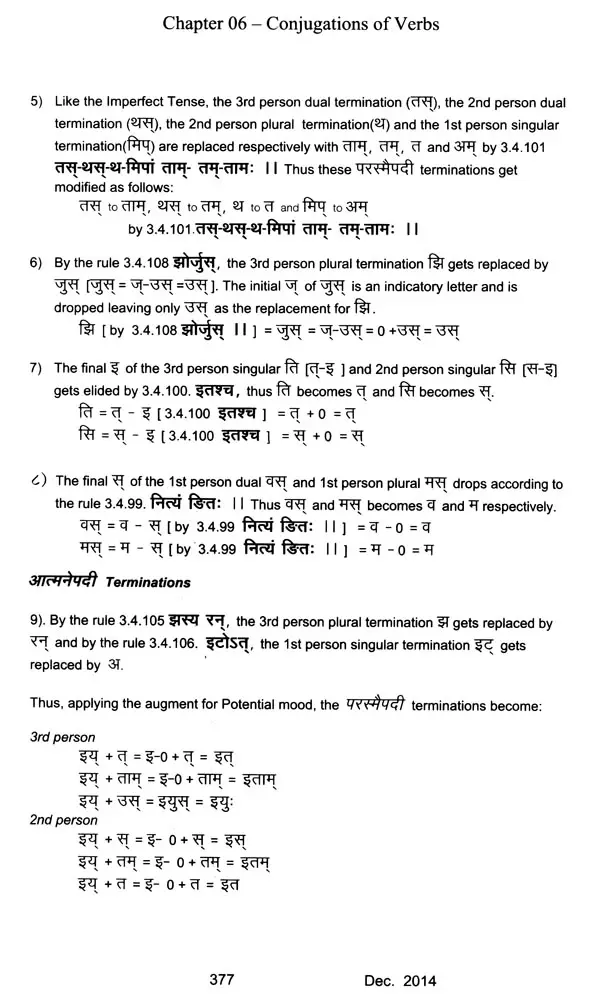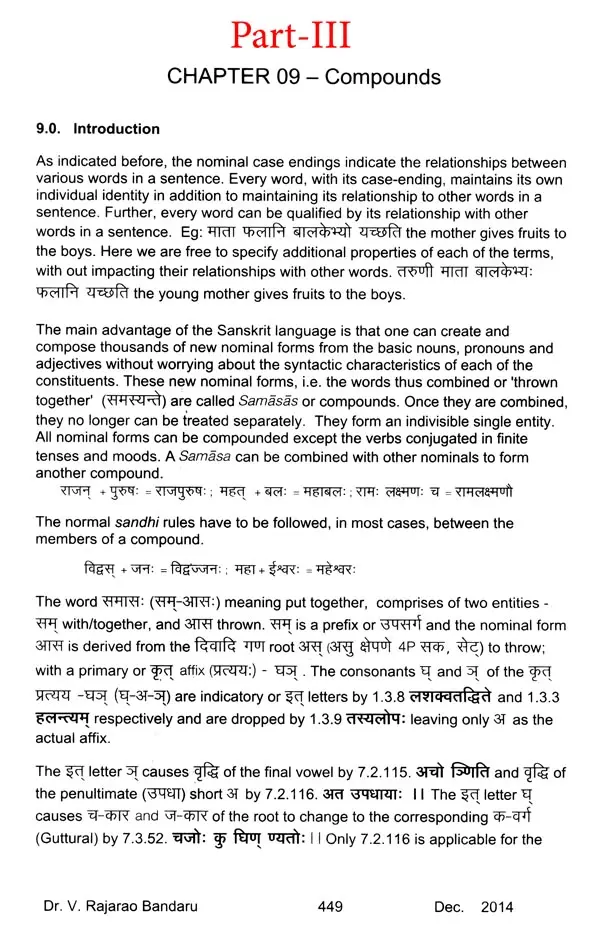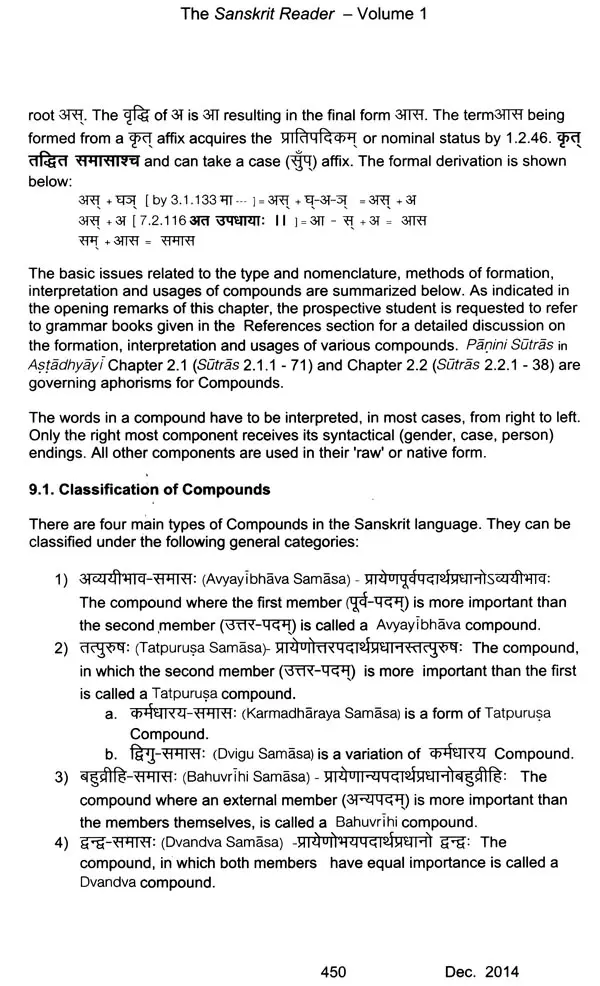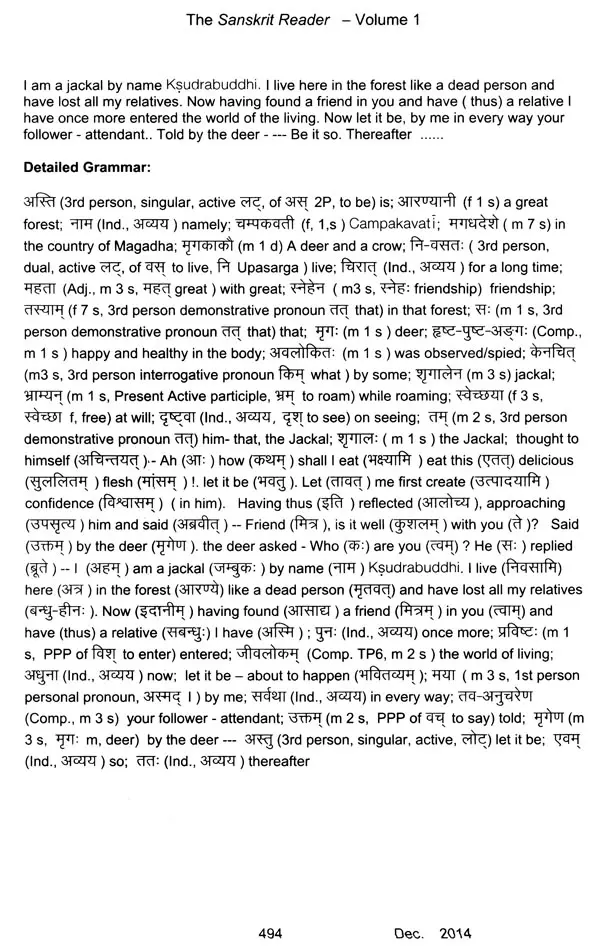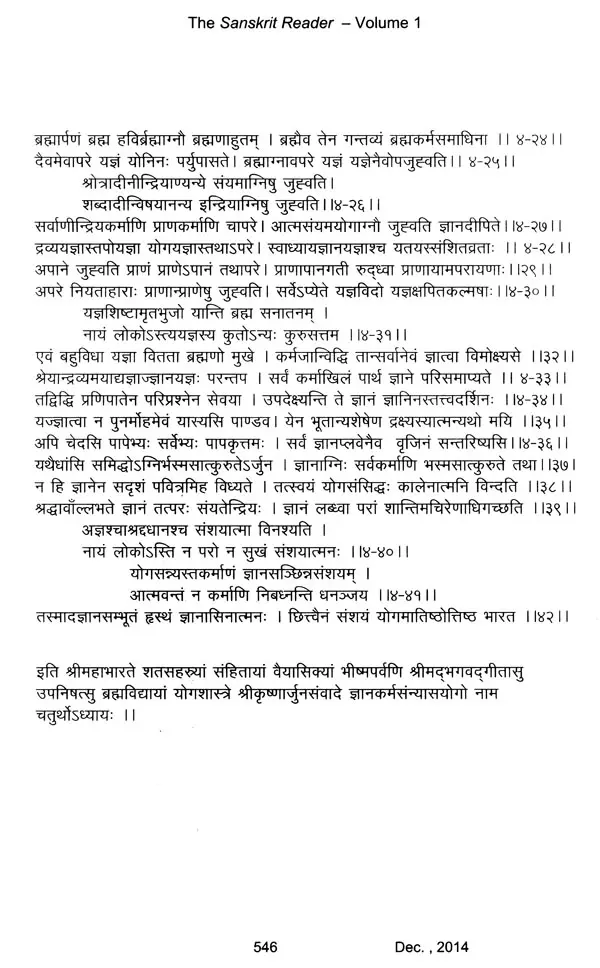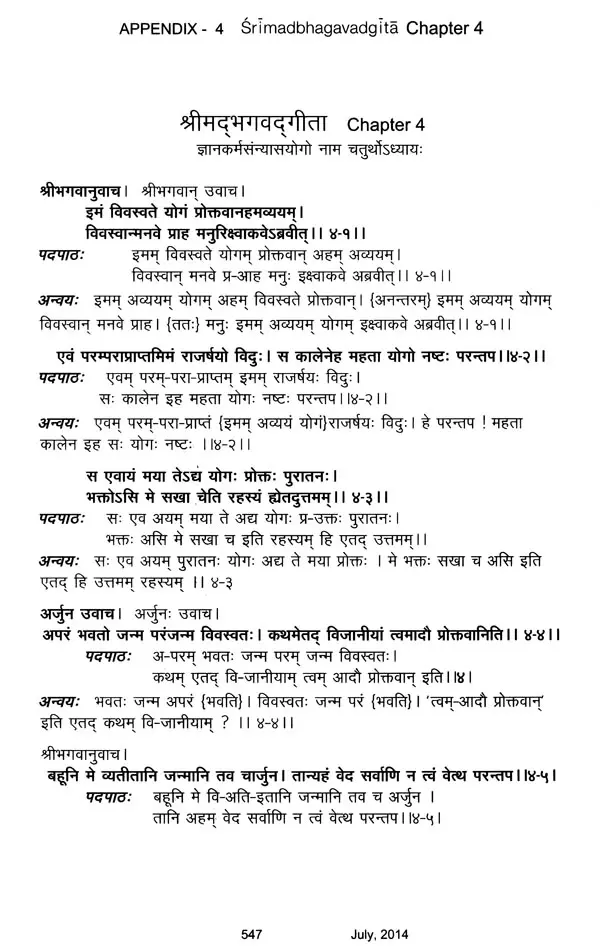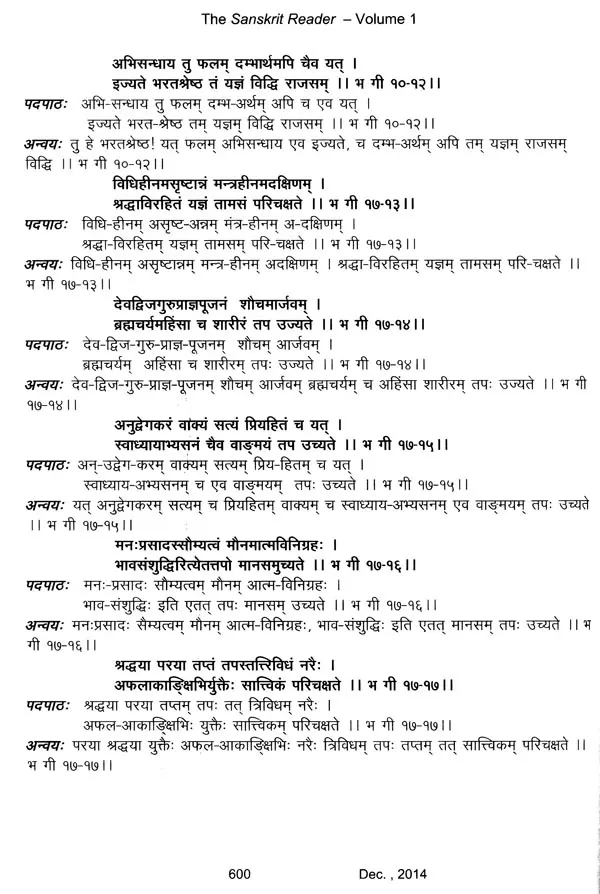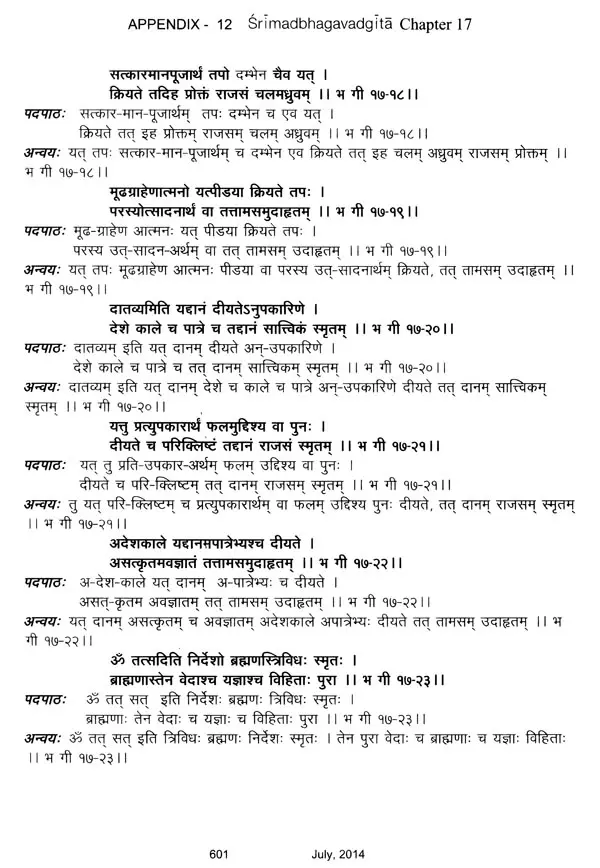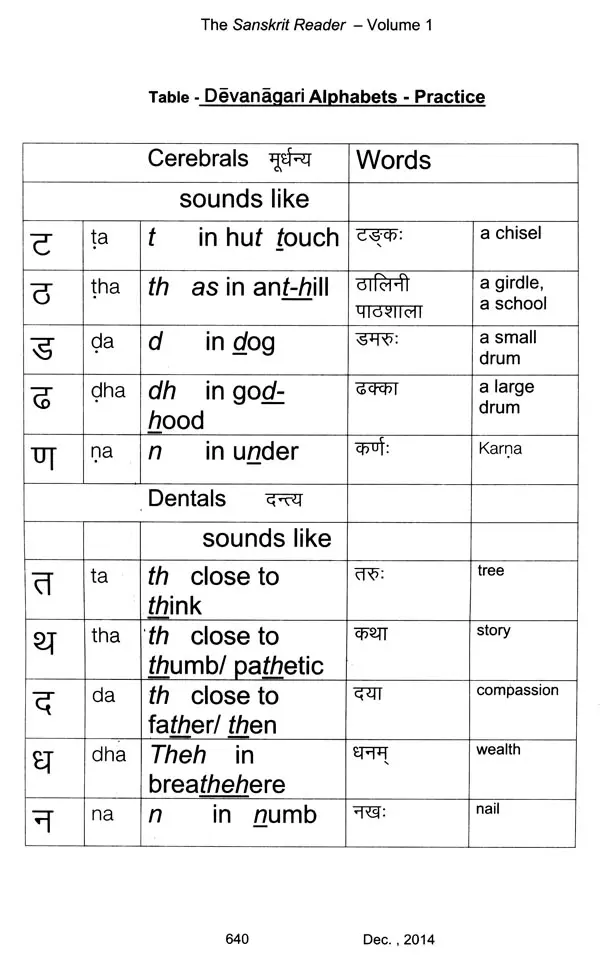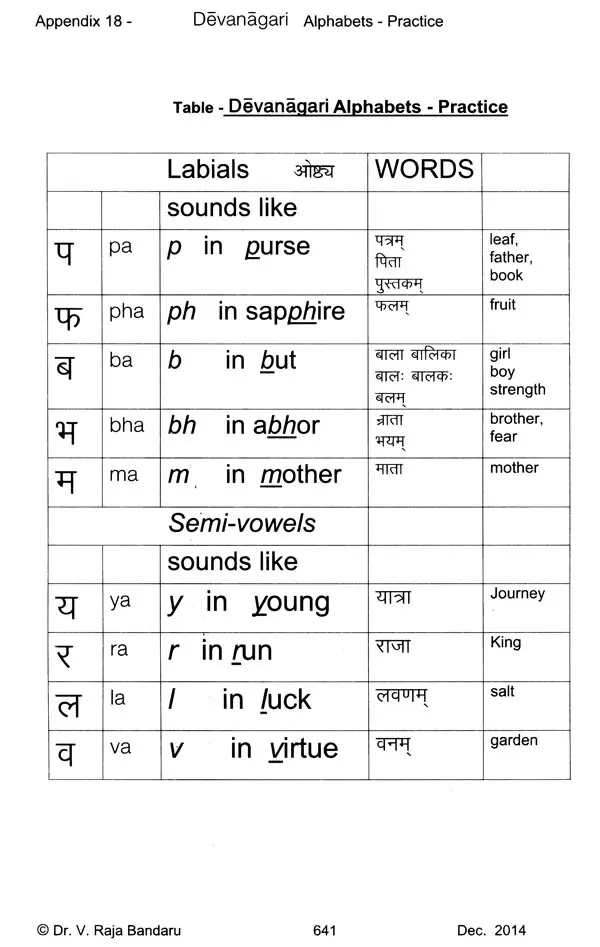
संस्कृतम्- Learning Samskrtam, A Reader for Quick Start Learning Process (Set of 3 Books)
Book Specification
| Item Code: | UAD963 |
| Author: | V. Raja Rao Bandaru |
| Publisher: | The Chinmaya International Shodh Sansthan, New Delhi |
| Language: | Sanskrit and English |
| Edition: | 2015 |
| ISBN: | 9789380864310 |
| Pages: | 724 |
| Cover: | PAPERBACK |
| Other Details | 11.00 X 9.00 inch |
| Weight | 1.79 kg |
Book Description
several scholars in the East and the West have spent their lifetime in Paninian studies. We are grateful to them for favor of their distinct contributions to preservation and promotion of Paninian studies.
It is now for an eminent engineer like Dr. V. Raja Bandaru to present Panini as a "LINGUISTIC Engineer" through his illustrious book" Learning Samskrtam Sanskrta Reader".
His engineering skill in presenting the divergent aspect of a great marvelous linguistic structure like Sanskrit that continues standing undamaged for millennia despite several earthquakes will go a long way towards not only strengthening Paninian studies but also creating a novel science of longevity of any language on the globe.
A language is a living organism, It can be short-lived or long-lived depending on how we u e it.
Thanks to a reputed engineer like Dr. Bandaru, Panini may emerge a! a hard may emerge as a hard taskmaster promoting the longevity of any language on the globe.
Several teachers helped me in my Sanskrit learning process with patience and kindness. I would like to express my gratitude to Swami Shanthanandaji and Shiva Prasad Pandyaram of Chinmaya Mission, Cranbury, Swami Tadatmanandaji of Arsha Bodha Center, Somerset, Satish Karandikar of Montgomery, and the late Lakshmi Kanthan of Manalapan, all from New Jersey.
I am extremely lucky and grateful to Professor Ram Karan Sharma and George Cardona, two of the living legends in Sanskrit and the recipients of many awards and authors of several books, for their guidance, advice and for writing the foreword for this book. I benefited immensely from their advice in this project.
This book grew out of many Sanskrit courses I have taught since 2007. I have learnt much from my students during the course of this time. I would like to thank Dr. Chandrakala Kamath, Prakash Nellikunja, Krishna Hegde Hema Chandru and Kalpesh Jasapara for proofreading and for their suggestions to improve the readability of the text. It was a painstaking exercise and I am grateful for them.
This book is dedicated with gratitude to my parents late Ratnamma and late Subbaiah Bandaru; and to my elder brothers late Radhakrishna Murthy and Koteswararao, who always gave me everything I needed, while foregoing, many times their own needs. I am grateful for Swami Advayananda, Head, and Chinmaya International Foundation for blessing this project and for Writing the Foreword.
Last but not the least; I would like to extend my appreciation and thanks to my wife Vara Lakshmi and my children Padmaja Rani, Kishore and Krishna for their support during the course of this project. My 2nd son the late Venu Madhav provided me with much inspiration while he himself was suffering from a dreadful brain tumor.
The author takes the responsibility for all the errors and omissions. Input from the readers for improvement is great greatly appreciated.
"Even a bare catalog of the names of ancient and modern grammarians and their works as are still preserved to us can amply bear out the truth of this assertion"
" On the lowest calculation there are yet currently in various parts of India nearly a dozen different schools of Sanskrit grammar, at least three hundred writers in the field including those that are known to us only from quotations, and more than a thousand separate treatises, original as well as, explanatory ... " the quality of works produced that has won for it a recognition and an honorable mention even at the hands of the rigorously scientific philologists of our own day, who are not ashamed to own their obligations to works and authors of over twenty-five hundred years"
It can be seen from the above, that the study of Sanskrit has received more attention than the study of any other language and grammar by the people in any country. The study of Sanskrit contributes to the enhancement of Logic and the logical power of thinking. This in turn leads to the development of the mind and human understanding which is essential for growth and sustenance.
1.1. Why does one study a language
People engage in learning a new language for several reasons. Some of them are:
As a part of regular school work - as a student To gain additional language skills with a hope for professional growth- when you work in an enterprise which is planning to diversify its customer base, knowing the language of the prospective customers will enhance the goodwill of the company.
When planning to travel to a new country on vacation, skills in the language of the people would make the trip to the host country pleasant and enjoyable.
Skills in a specific language open the door to the study and understanding of the rich heritage, culture, scientific, technical and literary wealth where that language is used.
A. genuine question may arise in the minds of the prospective reader of this book, What is the need for the study of Sanskrit Language, when it is not spoken actively?
Book's Contents and Sample Pages
